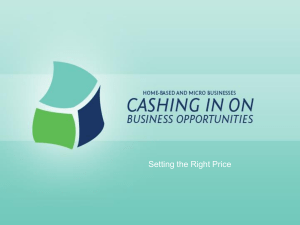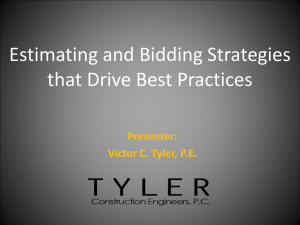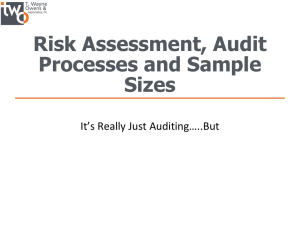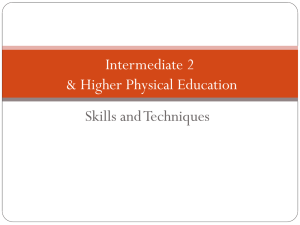Setting the Right Price
advertisement
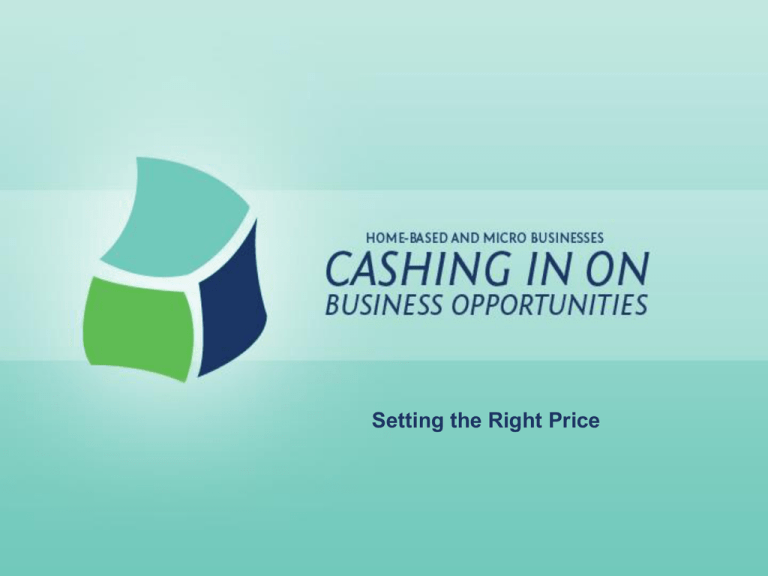
Setting the Right Price Setting the Right Price Lesson Goals: • Learn how to: – Calculate total costs – Calculate a profit margin – Use break-even analysis • Identify the difference between wholesale and retail pricing • Discuss psychological factors that impact pricing Setting the Right Price “Under pricing is one of the most common mistakes home-based businesses make.” Setting the Right Price Realistic Prices • Cover Costs • Earn a Profit • Attract Customers Setting the Right Price Educated Guess or Orderly Analysis Setting the Right Price Direct Costs Labor Costs Overhead TOTAL Costs Setting the Right Price Direct Costs The costs of the materials and supplies related to the actual production of a product or service. Setting the Right Price Labor Cost of services provided by workers for wages Setting the Right Price Overhead All the costs of running a business that are not directly related to the actual production of a product or service Setting the Right Price Overhead Expenses • • • • • • • Advertising Business Permits Business-Related Travel Office Supplies Office Equipment Insurance Demonstration Materials • • • • Rent Utilities Taxes Other BusinessRelated Costs • Equipment / Supplies • Maintenance Equipment / Repairs Setting the Right Price Overhead Expenses Direct Costs + Labor Overhead Percent Setting the Right Price Overhead Percent Example Direct Costs = $4,000 Labor = $6,000 Overhead = $2,000 Overhead Expenses _________________________________________________________ Direct Costs + Labor $2,000 = _________________________________________________________ $10,000 = .20 or 20% Setting the Right Price Labor Direct Costs Overhead Total Costs Setting the Right Price Total Cost Example Direct Costs = $5.00 Labor [2hrs @ $10 per hour] = $20.00 Overhead [@ 20% of $5.00 +20.00] = $5.00 Direct Costs + Labor + Overhead = $5 + $20 + $5 = $30 Setting the Right Price Profit Income after all expenses have been paid Setting the Right Price Direct Costs + Labor + Overhead Profit Price Setting the Right Price Factors to Consider When Setting Price • • • • Direct Costs Labor Overhead (20% - 25% of Direct Costs + Labor) Profit (10% - 20% of Total Costs) Setting the Right Price Price Direct Costs = $5.00 Labor [2hrs @ $10 per hour] = $20.00 Overhead [@ 20% of $5.00 +20.00] = $5.00 Profit [@10% of $5.00 + $20 $5] = $3.00 Direct Costs + Labor + Overhead + Profit = $5 + $20 + $5 + $3 = $33 Setting the Right Price Retail Price Direct Costs = $5.00 Labor [2hrs @ $10 per hour] = $20.00 Overhead [@ 20% of $5.00 +20.00] = $5.00 Profit [@10% of ($5.00 + $20 + $5)] = $3.00 Wholesale Price = $33 Retail Price [wholesale price x 2] = $66 Setting the Right Price Break-Even Point The point at which sales (revenues) are exactly equal to costs (expenses). Sales = Variable Expenses + Fixed Expenses Setting the Right Price Break-Even Point Example Sales = Variable Expenses + Fixed Expenses 1.00x = .45x + 275 1.00x - .45x = 275 .55x = 275 x = 500 Setting the Right Price Break-Even Point Example Sales = Variable Expenses + Fixed Expenses 1.00x = .45x + .20(1.00x) 1.00x - .45x = 275 + .20x 1.00x - .45x - .20x = 275 .35x = 275 x = 786 Setting the Right Price Psychological Aspects of Pricing • • • • Competition Discounts Estimates Exclusivity • • • • Location Odd Number Prestige Professionalism Setting the Right Price Psychological Aspects of Pricing • Expertise • Inflation • Itemizing • Quality • Seasonality • Volume • What the market will bear

